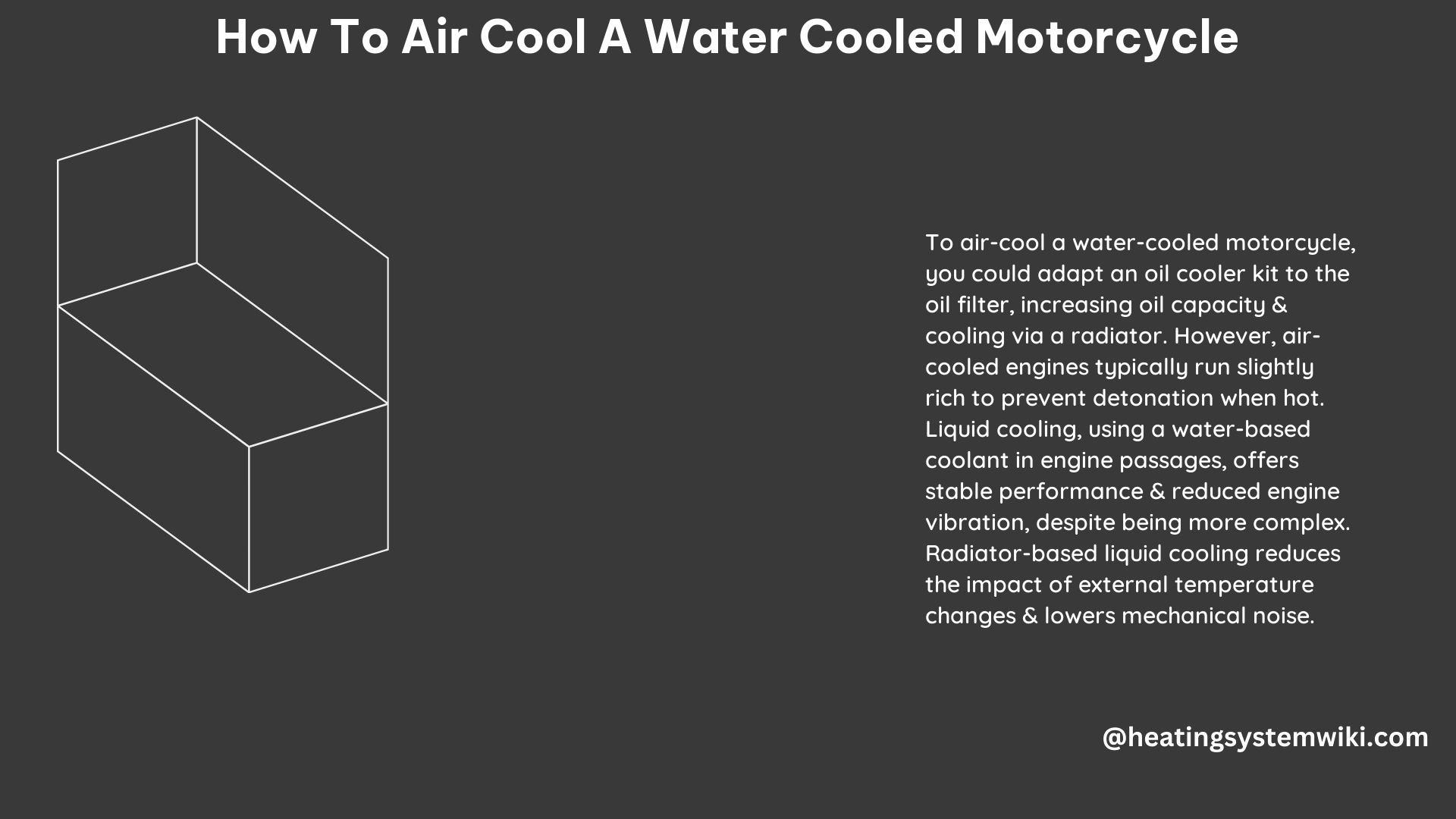Converting a water-cooled motorcycle to an air-cooled system can be a challenging but rewarding project for the DIY enthusiast. This comprehensive guide will walk you through the technical specifications and step-by-step process to successfully air cool your water-cooled motorcycle.
Technical Specifications for Air Cooling a Water Cooled Motorcycle
Air Cooling Fins
The air cooling system will require fins attached to the engine to increase the surface area for heat dissipation. The size and shape of the fins will depend on the engine size and power output. As a general guideline, the fins should have a surface area of at least 0.5 square meters (5.4 square feet) per 1 kW (1.34 hp) of engine power. The fins should be made of a highly conductive material, such as aluminum alloy, and spaced approximately 10-15 mm (0.4-0.6 inches) apart to optimize airflow.
Heat Sink
A heat sink made of a material with high thermal conductivity, such as aluminum or copper, will need to be installed to help dissipate the heat generated by the engine. The heat sink should have a surface area of at least 0.25 square meters (2.7 square feet) per 1 kW (1.34 hp) of engine power and be positioned to receive adequate airflow.
Fan
A high-performance fan will need to be installed to blow air over the fins and heat sink. The fan should be capable of moving at least 1 cubic meter (35.3 cubic feet) of air per second per 1 kW (1.34 hp) of engine power. The fan should be powered by a separate electrical system, such as a dedicated alternator or battery, to ensure reliable operation.
Temperature Sensor
An accurate and reliable temperature sensor should be installed to monitor the engine temperature and prevent overheating. The sensor should be connected to a gauge or warning light that is easily visible to the rider.
Oil Cooler
An oil cooler can be added to the system to help dissipate the heat generated by the engine oil. The oil cooler should be installed in a location where it can receive adequate airflow and be connected to the engine oil system with hoses and fittings.
Step-by-Step Guide for DIY Air Cooling System

1. Remove the Water Cooling System
Begin by draining the coolant and removing the radiator, water pump, and hoses. Thoroughly clean the engine to remove any residual coolant.
2. Install the Air Cooling Fins
Attach the air cooling fins to the engine using bolts or rivets. Ensure that the fins are spaced evenly and securely to optimize heat dissipation.
3. Install the Heat Sink
Mount the heat sink to the engine using bolts or clips. Position the heat sink so that it receives adequate airflow and covers the hottest parts of the engine.
4. Install the Fan
Mount the fan in a location where it can blow air over the fins and heat sink. Connect the fan to a power source, such as the battery or a dedicated alternator.
5. Install the Temperature Sensor
Install the temperature sensor in a location where it can accurately measure the engine temperature. Connect the sensor to a gauge or warning light that is easily visible to the rider.
6. Install the Oil Cooler (Optional)
If desired, install the oil cooler in a location where it can receive adequate airflow. Connect the oil cooler to the engine oil system with hoses and fittings.
7. Test the System
Once the air cooling system is installed, test it thoroughly to ensure that it is working properly. Monitor the engine temperature to ensure that it does not overheat.
Conclusion
Converting a water-cooled motorcycle to an air-cooled system is a complex but rewarding project that requires a good understanding of motorcycle engineering and fabrication. By following the technical specifications and step-by-step guide provided in this article, you can successfully air cool your water-cooled motorcycle and enjoy the benefits of a more reliable and efficient cooling system.
